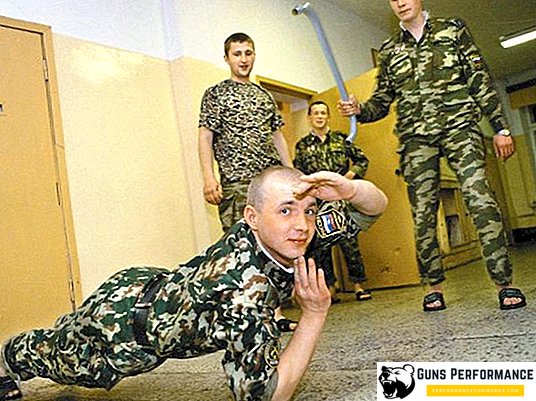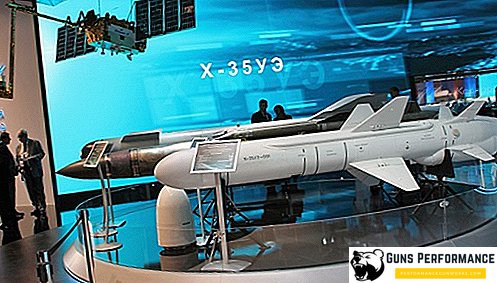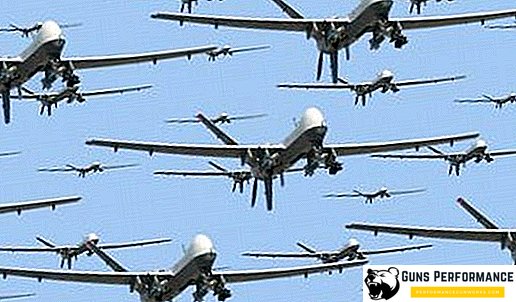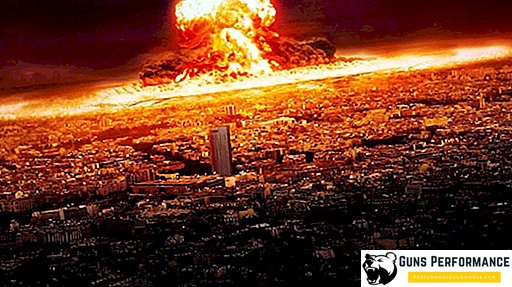
After the end of World War II, mankind almost immediately fell into a new protracted conflict, in an era of confrontation between two global military-political blocs - the communist, led by the Soviet Union, and the western, the leader of which was the United States of America. This period lasted more than forty years and was named the Cold War.
At the end of the Second World War, the United States was able to create nuclear weapons, in a few years it appeared in the Soviet Union. After that, both countries joined the insane nuclear arms race, increasing their arsenals and creating more and more sophisticated means of delivering thermonuclear charges. Several times, mankind literally stood on the edge, only a few millimeters separated it from the atomic Armageddon.
The cold war gave rise to numerous phobias: the West was afraid of Soviet tank armadas and nuclear submarines, and in the USSR they frightened citizens with "Pershing" and Tomomawk cruise missiles. One of the main horror stories of the Cold War was a cobalt bomb - a new type of nuclear weapon that could not only incinerate the earth, but also turn it into a radioactive desert for many decades. This term has not disappeared without a trace along with the era of the Cold War, materials about the cobalt bomb can still be easily found on the Internet. Sometimes it is called a "dirty" bomb, which, in general, is not quite true.
Does this type of nuclear weapon actually exist? On what principles does a cobalt bomb "work" and how is it dangerous? Are such weapons being developed today?
Cobalt bomb: what is it
Conventional nuclear weapons have several damage factors: light radiation, shock wave, radioactive contamination, electromagnetic pulse. As the experience of Hiroshima and Nagasaki showed, as well as numerous subsequent tests of nuclear weapons, the shock wave and light impulse bear the most victims and destruction. Radioactive contamination is also deadly, but it usually does not act instantly, especially since the explosion of conventional nuclear or thermonuclear ammunition reduces this factor to a minimum, moreover, due to natural decay, radioactivity rather quickly decreases.
Initially, this threat was not paid attention at all, the Japanese began to rebuild Hiroshima and Nagasaki right on the spot of nuclear explosions, and only a few years later they noticed a sharply increased number of oncological diseases and genetic abnormalities in children.
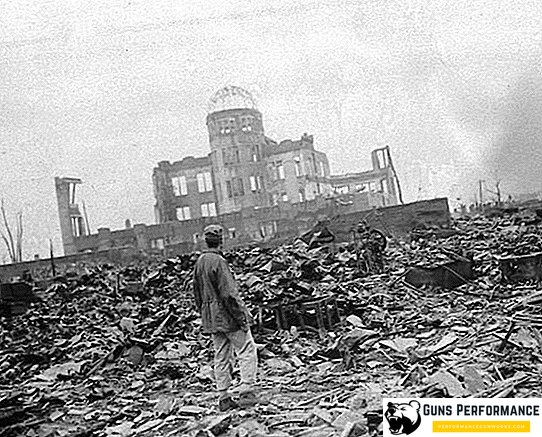
Already in the early 50s, the development of nuclear weapons began, the main factor in the destruction of which would be radioactive contamination. Later it was called radiological.
The idea of destroying the enemy with the help of radioactive radiation was born before the invention of the first nuclear bomb - back in the early 40s. And the first thought that came to mind was not a scientist or a general, but the famous American science fiction writer Robert Heinlein. In 1940, the then novice and little-known writer published the story "A Useless Solution" in which the countries of the anti-Hitler coalition bombed German territory with ordinary bombs filled with radioactive materials.
The Nazis, having received such an unexpected blow, quickly signed a surrender. It is curious that in this narrative the development of weapons based on the fission of uranium nuclei ended in failure, which is why the allies had to use a “dirty” bomb. This moment is indicative: the fact is that many did not believe in the reality of the creation of nuclear weapons, not only the military, but also scientists.
If the use of conventional nuclear weapons can be experienced in a shelter, and then begin to rebuild the affected areas - as the Japanese did with their cities - then this will not work with radiological weapons: the area will remain uninhabitable for many decades to live. This is the main idea of the development and use of a cobalt bomb.
The device of the first dirty bombs was very similar to what Heinlein described: they were ordinary containers with radioactive materials and a charge of explosives, which were dropped over enemy territory. At the required height an explosion occurred, which carried the isotopes over the attacked area. However, already in 1952, a fundamentally different design of radiological weapons was proposed to the American scientist Sillard, and for the first time there was the use of cobalt - a material capable of producing very strong radiation for a long time.
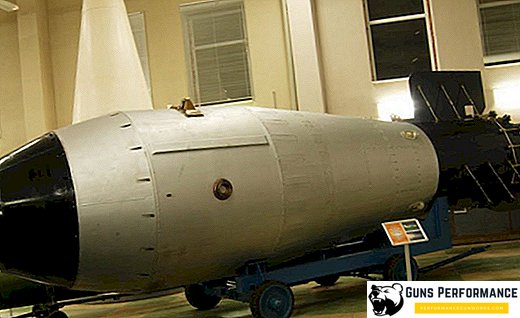
In this project, the usual hydrogen bomb was lined with plates from the natural cobalt isotope (cobalt-59). After the explosion of the munition, the high temperature, radiation, and overpressure turned cobalt into a highly radioactive isotope cobalt-60 and scattered it over a considerable area.
Shortly after the appearance of this project, a special term for the radiological weapon was coined: Doomsday Machine ("Doomsday Machine"). By this was meant any thermonuclear explosive device that can produce a radioactive cobalt isotope in large quantities. He was suggested by that same Silard - the creator of the first cobalt bomb.
In its very "cannibalistic" version, the Doomsday Machine did not require delivery vehicles at all. With sufficient power of such a munition, any state could just blow it up on its territory, and the radioactive contagion within a few months of atmospheric currents would have spread throughout the planet. The population of the aggressor in this case would have died among the first, but the rest of this is unlikely to become easier. Such a bomb looks like an ideal means of blackmailing the rest of humanity, however, it should be noted that neither the USSR nor the United States decided to manufacture such ammunition.
Crazy projects like Doomsday Machine played a crucial role in shaping the global anti-war movement. Citizens of different countries clearly realized that the next world war will really be the last, and no bomb shelter will save it. It was at this time that a powerful social movement emerged, advocating nuclear disarmament.
By the way, the creator of the idea of a cobalt bomb Leo Silard was by no means a bloodthirsty maniac. With his project, he wanted to show people all the futility of the nuclear arms race. In one of the radio programs, the famous physicist stated that a cobalt bomb is much easier to destroy all of humanity than any particular part of it.
In the mid-60s, cult director Stanley Kubrick shot one of the best anti-war films - “Dr. Strangelove, or how I stopped being afraid and fell in love with the bomb,” the “main character” of which was the Soviet cobalt bomb, which was activated after the US attack.
Around the same time, the “economy” and the technological complexity of the cobalt bomb project were calculated in the USA. The data obtained horrified the Americans: it turned out that any country possessing nuclear technologies could create the “Doomsday Machine”. A little later, the decision to completely ban projects related to cobalt-60, said in the Pentagon.
In the early 60s, the British studied the properties of cobalt. They used this element as radiochemical labels during thermonuclear test at the test site in Australia. Information about this leaked to the English press, which gave rise to rumors that Britain not only developed a cobalt bomb, but also engaged in its testing. The scandal badly tainted the international image of London.
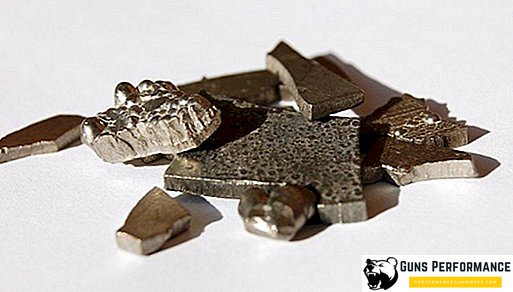
They were interested in the creation of cobalt nuclear weapons in the USSR. In particular, the future "dissident" and "humanist" academician Sakharov took part in the development of the Soviet "dirty" bomb. He offered Khrushchev to build a ship with a cobalt sheath and a nuclear bomb inside and blow it up somewhere off the coast of the United States. In this case, almost the entire territory of this country would be infected.
Gradually, however, the excitement around the cobalt bomb faded away. The reason for this was not the voice of reason, which was finally heard by high-ranking generals, and not considerations of humanism. It was simply concluded that such a weapon has no meaning. Modern war is being waged to seize foreign territory, after an explosion of a nuclear or thermonuclear device, it can soon be used at its discretion. With a dirty bomb, the situation is different: a high level of infection, sustained for decades, makes any territorial seizures meaningless. To deter the enemy, conventional nuclear warheads were enough, which the US and the USSR "nashtampovali" enough to destroy the planet several times.
There is one more reason. Any type of nuclear weapon passed multiple tests - first ground and then underground. But how to experience radiological weapons? Who wants to turn their own territories into lifeless deserts for decades?
Much of the above relates to nuclear munitions that contain cobalt in one form or another. However, the term "dirty" bomb has another meaning. They are often called ammunition containing radioactive elements and conventional explosives. After detonation, isotopes are distributed over a large area, making it unsuitable for life. Such a “dirty” bomb is much more dangerous than those developed by superpowers during the Cold War. The reason is very simple: even the poorest and technically underdeveloped states are able to get such ammunition. To develop a real nuclear bomb, it is necessary to create a new industry, a very high-tech and expensive one. A state wishing to join a nuclear club should first build one or more nuclear power plants, get special centrifuges, prepare the necessary specialists. All this requires billions of dollars in costs and many years of hard work. It is even more difficult to create effective means of delivering nuclear weapons: ballistic missiles or bombers.
On the other hand, to get radioactive materials is quite simple - today they are widely used in various industries, in scientific research and in medicine. For example, americium-241 isotope is used in conventional smoke detectors; radioactive materials are used in significant quantities in medicine. Of course, to make a dirty bomb you will have to gut some millions of sensors, but there are processes in which isotopes are used in much larger quantities.

Theoretically, such an ammunition can be assembled not only by a rogue state, but also by a terrorist organization. No wonder “dirty” bombs are often called “nuclear weapons for the poor.” The consequences of its use can be seen in the exclusion zone of the Chernobyl nuclear power plant. There was a thermal explosion (albeit a very powerful one), as a result of which a large number of radioactive isotopes were released into the environment. The area around the station today (more than thirty years have passed) is deserted, and the city of Pripyat is a graphic illustration of how our planet will look like without humanity.
If the September 11, 2001, terrorist attack in New York had happened with the use of a “dirty” bomb, then this city would have turned into a ghost, and the number of victims would be in the tens of thousands.
Until now, a dirty bomb is rather a fictional weapon that, hypothetically, could be a danger to any modern state. However, special services take the likelihood of such terrorist attacks very seriously, so the trafficking of radioactive substances is under the strictest control.
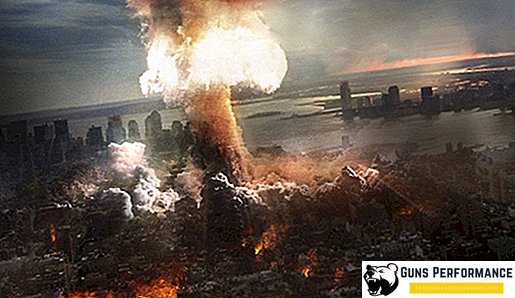
Cobalt bomb device
With a conventional nuclear explosion forms a huge amount of a wide variety of radioactive isotopes. However, most of them have a very short half-life, so that the radiation level drops significantly within a few hours after the explosion. The most dangerous time is quite possible to sit out in an air-raid shelter, and after a few years the territories become fully suitable for economic activities.
The most dangerous for humans are isotopes, whose half-life occurs over the years and decades: cesium-137, strontium-90 and 89, zinc-64, tantalum-181. Such a period cannot be spent in a bomb shelter; the territory affected by these elements remains unsuitable for life for several generations.
The cobalt bomb has the last shell, made not of uranium, but of cobalt. It is 100% cobalt-59 isotope. Under the influence of a strong neutron flux during an explosion, it turns into an unstable isotope cobalt-60, whose half-life is 5.2 years. As a result, there is still an unstable element - nickel-60, which is also radioactive and emits beta radiation.
Scientists even considered how much cobalt was needed to completely sterilize our planet. For this, 510 tons of cobalt-60 isotope was enough. In this case, a person in about a year is guaranteed to receive a lethal dose of radiation.
Summarizing all the above, we can say the following. Nowadays, a cobalt bomb is more of a fiction and horror story from the Cold War times. It is relatively easy to make, but it is not clear why it should be used. Potentially much more dangerous than ordinary "dirty" bombs that are not nuclear weapons. The main problem is the possibility of getting such ammunition in the hands of terrorist organizations.


